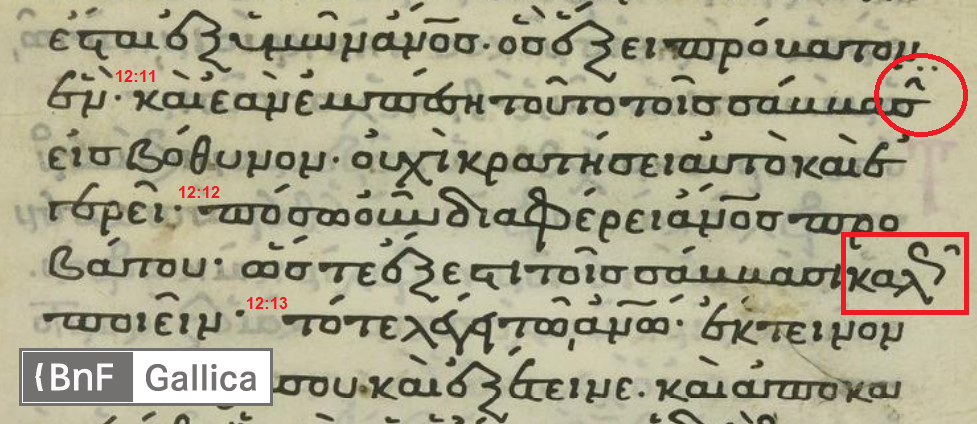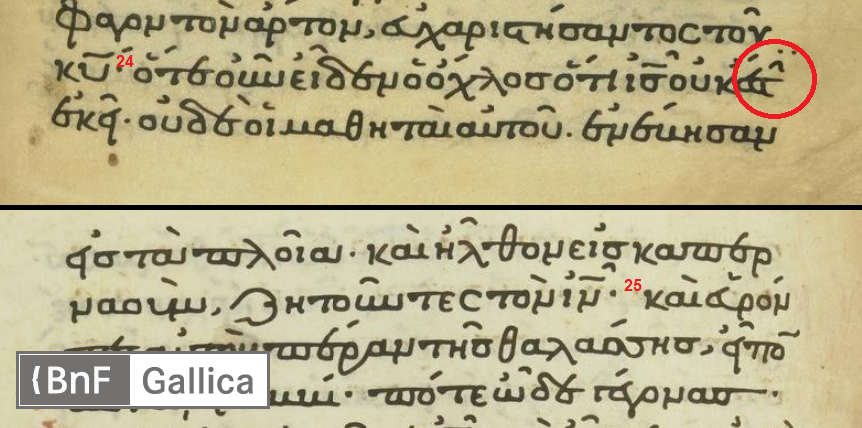 |
| The Plano Marriott at Legacy Town Center |
Daniel Buck was
there, and was able to attend about half of the sessions. He had these takeaways from the first day of
the conference:
The speakers were
generally in agreement that there is still much
new ground to be turned in the field of New Testament textual criticism.
l Hugh
Houghton foresees much more to discover in palimpsests through Multi-Spectral
Imaging, and much to be gained from the study of family relationships in catena
manuscripts.
l Timothy
Mitchell envisions learning more about how published
work made it into circulation, and especially how they were guarded against
tampering once they passed out of the authors’ direct control, by studying
numerous references to that process in Greco-Roman classical works.
l Peter Montoro has only just started us off in tracking down more examples of back-eddies in the transmission stream where continuous text manuscripts textually feed off of patristic homilies, such as a singular reading in GA 104 at Romans 2:26 from Chrysostom's homilies (Jan Krans, a bit later in the day, cited John 1:28 in Origen as such a case).
l Dirk
Jongkind thinks that it’s time to turn a corner in our approach to singular
readings (proposing that they should be weighed both before and after counting
them), and may even be ready to remove the old but not-quite-yet-ancient
landmark of the Gregory-Aland numbering scheme.
l Ryan
Griffin wants us to further change the modern critical text to align more
closely with the “Western” readings of p46 at three places in Philippians.
l Edgar
Ebojo sees a lot of work to be done in using distinctive line endings,
especially in reconstructing inextant text and in distinguishing the scribes by
their idiosyncratic ways of writing them.
l Jan
Krans is not at all ready to declare the “folly and duty” of proposing new
textual emendations to be complete.
And
that was all just from some of the first day’s sessions.
Zooming in on some specific details:
Hugh Houghton
explained how looking beyond the continuous text in the dozens of catena
manuscripts allows us to classify them into families, and even to identify
family readings which are a direct result of chopping the text into lemmas. Frequently the beginning or ending content of
a lemma is completely excised in the process, and for no other reason than ease
in production; only that content worthy of commentary was thought essential for
inclusion.
Now we can directly
identify the source of omission for which, in such cases, could be accounted
for by no previously identified scribal habit. Houghton urges the special identification
of catena manuscripts, suggesting that prefixes or superscripts to GA numbers
could be used for this process. He foresees that a lot more about family
relationships between manuscripts will emerge as we do this.
 |
| Dirk Jongkind |
Jongkind pointed
out that there are two categories of evidence: singular readings, and changes made by a
particular scribe as he copied his exemplar. In an ideal world the first would be a
subcategory of the second, maybe even completely overlapping, but this is far
from the case in the five manuscripts for which it can reasonably assumed that
we have both the exemplar and the copy. Instead
we have three possible categories:
(1) singular
readings that are not scribal errors because they were actually copied from a
lost exemplar,
(2) singular
readings that are scribal errors because they were committed first-hand, and
(3) “undetected”
scribal errors that are not singular readings, because they were easy mistakes
to make and thus several unrelated manuscripts share them (thus causing the
most common scribal errors to be excluded from being counted under such a
scheme).
He mentioned five manuscripts for which the figures for both of the latter categories have been tabulated (three of these actually being the purple codices for which Elijah Hixson argued that he had been able to reasonably reconstruct their common exemplar, wherever two of the three agreed). These five vary considerably as to which proportion of their scribal errors are also singular readings, showing that the approach that only looks at singular readings is flawed, in that it excludes much of the available data from consideration.
Jan Krans gave a
thorough history of conjectural emendations going back to 1453 showing that emendation of the New Testament
text did not become a major practice until Erasmus and Beza, before tapering
off quite a bit since the end of the 19th century (perhaps due in part to the
lack of a classical education by today’s scholars). He even did some textual criticism of the
emendations, showing how confusing ellipsis marks for ditto signs in one
listing of known emendations had a similar effect on subsequent lists.


















